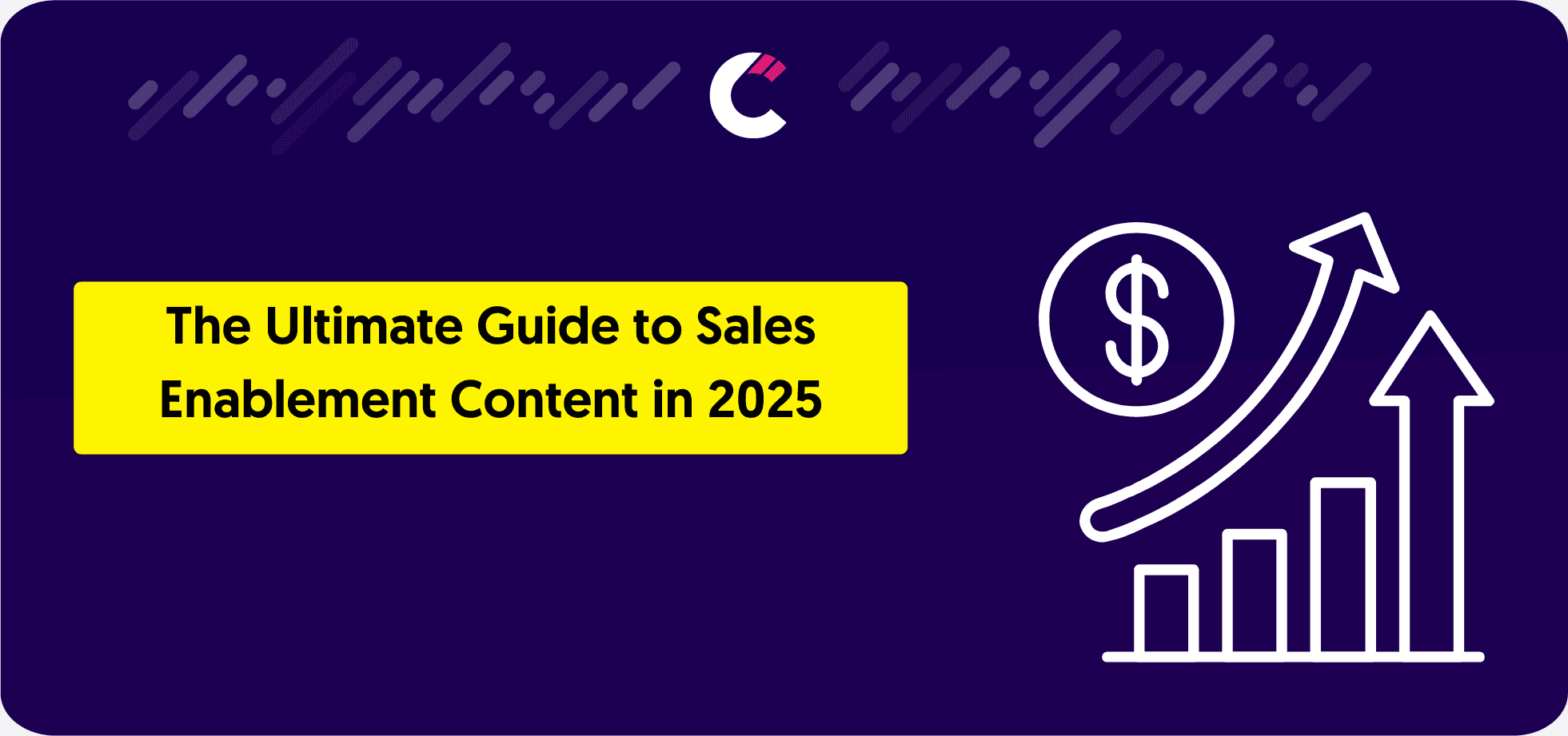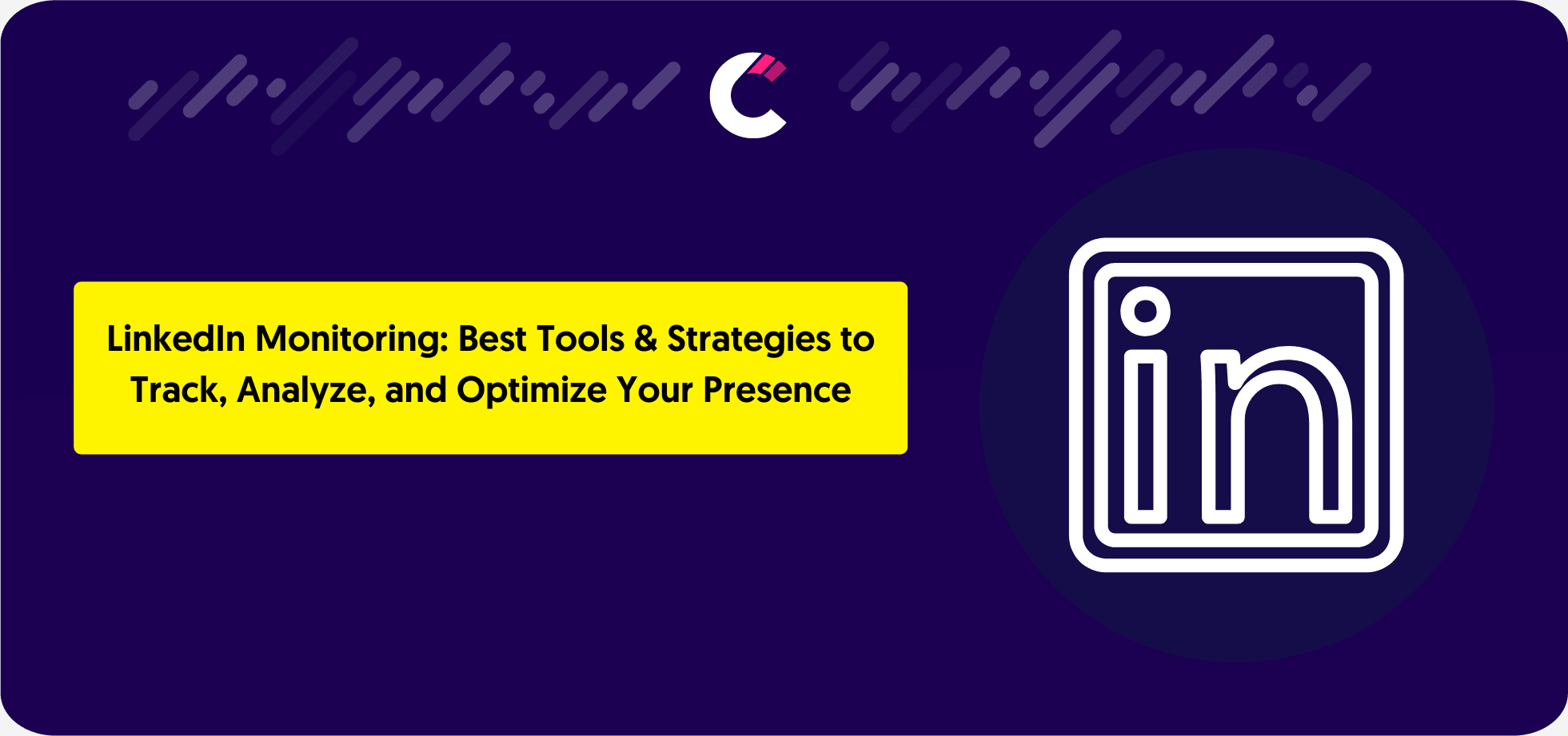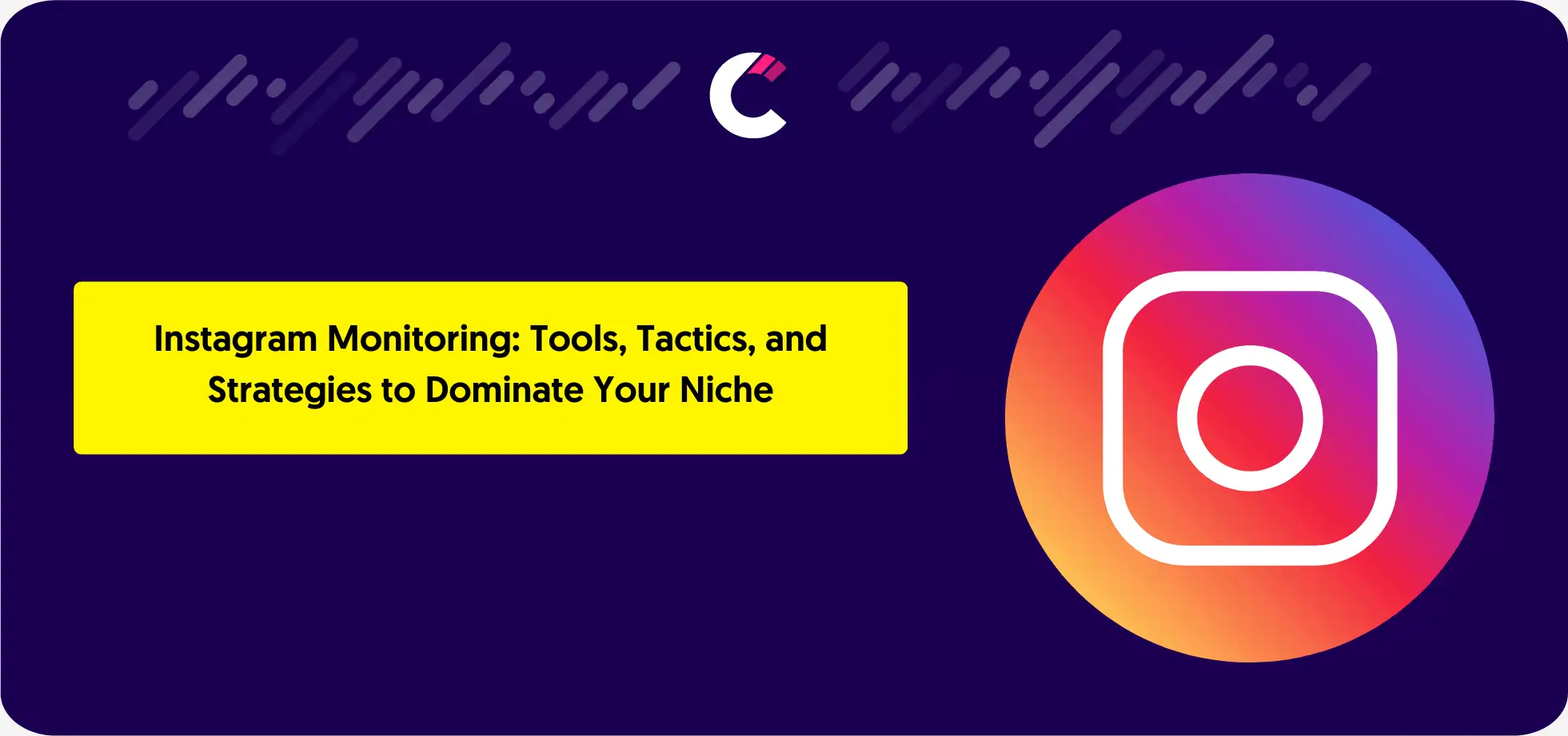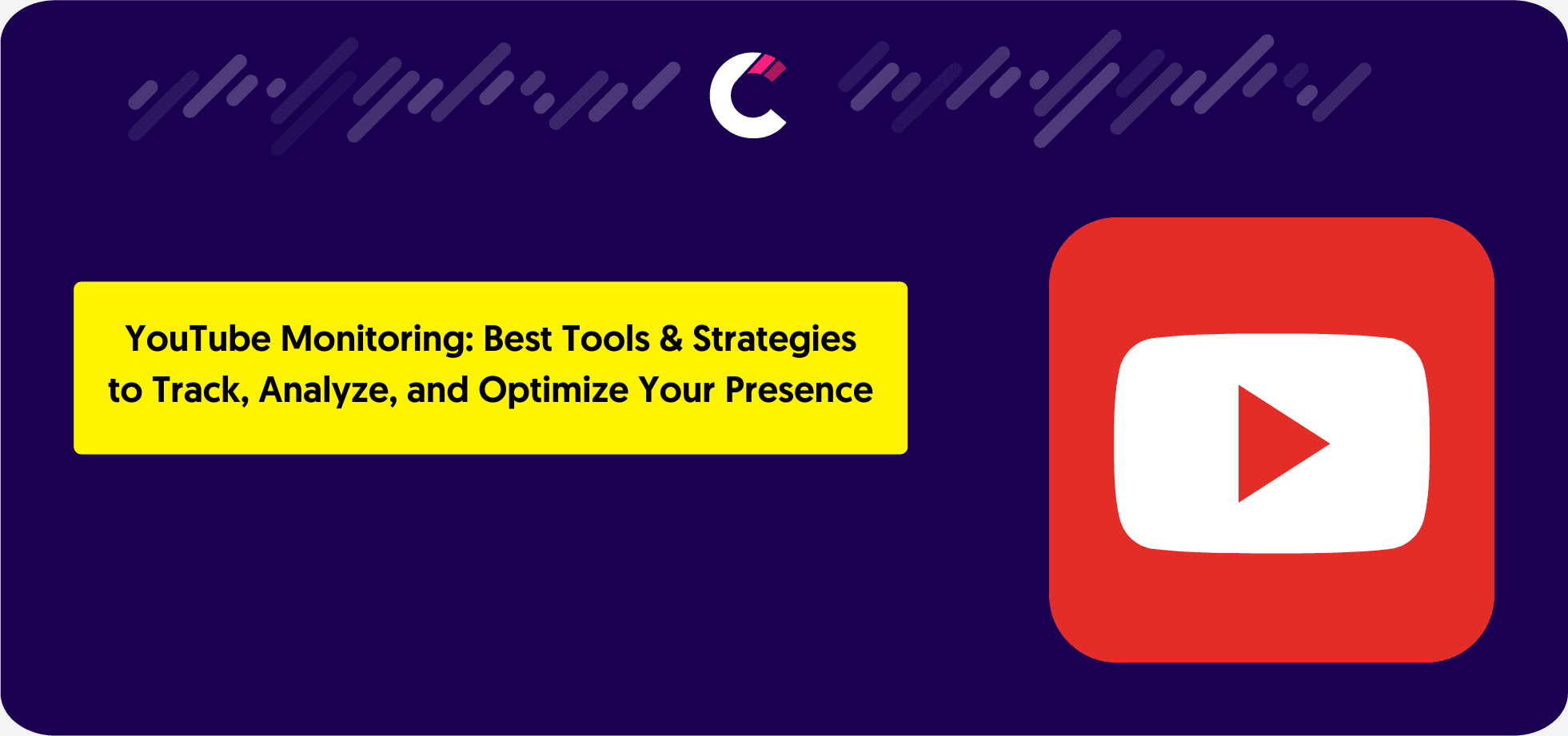What is Sales Enablement Content?
Definition and Purpose
Sales enablement content is designed to empower sales teams with the tools they need to connect effectively with prospects and close deals. It provides resources such as case studies, product demos, and sales playbooks that are tailored to address the needs of both the sales team and potential customers.
By bridging the gap between marketing and sales, this type of content ensures a consistent message and helps teams deliver a better buyer experience.
Types of Sales Enablement Content
Sales enablement content can be categorized into two main types: internal resources for the sales team and external-facing materials for prospects. Internal resources, such as training manuals and sales scripts, help sales representatives understand processes and effectively pitch products.
External content, like case studies and interactive demos, engages prospects by addressing their specific challenges. Together, these materials create a seamless experience for both sales teams and buyers.
Why is Sales Enablement Content Important?
Benefits for Sales Teams
Sales enablement content streamlines the sales process, allowing teams to focus on building relationships rather than creating materials from scratch.
Resources like pre-designed email templates, sales playbooks, and competitor battlecards reduce preparation time and ensure consistent messaging. This efficiency leads to higher productivity and improved performance, making it easier for sales reps to meet their targets
Benefits for B2B Sales
B2B sales often involve multiple decision-makers, long sales cycles, and high-value transactions. Sales enablement content plays a key role in addressing these complexities by delivering tailored materials that resonate with stakeholders at different stages of the buying process.
Resources like white papers, webinars, and ROI calculators help build trust and demonstrate value, ultimately driving conversions. Companies using effective sales enablement strategies report up to 67% faster deal cycles in B2B contexts, emphasizing its importance.
Types of Sales Enablement Content (With Examples)
Onboarding and Training Materials
Onboarding and training materials are essential for preparing new sales hires to hit the ground running. These resources typically include product manuals, video tutorials, and role-playing exercises to help new team members understand the sales process and value propositions.
Example: A SaaS company might use an interactive training platform like Lessonly, where sales reps can practice pitches, complete quizzes, and track their progress through tailored learning modules.
Best Practice: Customize training materials to specific roles within the sales team. For instance, account managers might focus on upselling strategies, while SDRs receive guidance on cold outreach techniques.
Buyer Personas
Buyer personas are detailed profiles that represent your ideal customers, including their goals, challenges, and decision-making behaviors. These profiles guide sales and marketing teams in tailoring strategies and content to meet specific customer needs.
Example: A B2B software company might create personas like “Tech-Savvy CIO” or “Cost-Conscious Procurement Manager,” complete with insights on their pain points and preferred communication channels.
Best Practice: Regularly update buyer personas based on feedback from sales teams and customer data to ensure they remain accurate and relevant to evolving market conditions.
Competitor Research and Battlecards
Competitor research and battlecards help sales teams stay informed about rival offerings and craft messaging that highlights unique selling points. These tools provide quick reference guides for competitive advantages and potential objections.
Example: Using a tool like Competitors App, a company can monitor competitors’ pricing changes and new feature releases, creating dynamic battlecards for their sales reps.
Best Practice: Focus on actionable insights rather than overwhelming details, ensuring that the information on battlecards is clear, concise, and easy to access during sales conversations.
Explainer Videos
Explainer videos simplify complex concepts, making it easier for prospects to understand the value of your product or service. These videos are particularly useful for breaking down technical solutions into relatable benefits.
Example: A cybersecurity company might create a short video illustrating how their software prevents phishing attacks in real-time.
Best Practice: Keep videos under two minutes and ensure they focus on a single, impactful message to maximize engagement and retention.
Testimonials and Win/Loss Stories
Testimonials and win/loss stories provide authentic feedback from existing customers and valuable lessons from previous deals. They humanize your brand and offer proof of success in solving real problems.
Example: A CRM provider might feature a testimonial from a small business owner who doubled their client retention rate after adopting the platform.
Best Practice: Use a mix of text, video, and audio testimonials to appeal to different audience preferences, and highlight specific outcomes to enhance credibility.
Email Templates
Email templates are pre-designed messages that help sales reps save time while ensuring consistency in communication. They are especially useful for outreach, follow-ups, and nurturing leads throughout the sales cycle.
Example: A SaaS company might create templates for cold emails, offering value-driven subject lines like “How [Product] Can Save Your Team Hours Weekly.”
Best Practice: Personalize templates with dynamic fields for names, company details, and specific pain points to make them more engaging and relevant to recipients.
Slide Decks and Sales Presentations
Slide decks and sales presentations are visual tools designed to communicate value propositions, showcase product benefits, and guide discussions during pitches or meetings.
Example: A fintech company might prepare a deck that includes market trends, customer success stories, and an interactive ROI calculator.
Best Practice: Keep slides visually clean and focused on key points, using high-quality visuals and limiting text to avoid overwhelming the audience.
White Papers and eBooks
White papers and eBooks provide in-depth, educational content that establishes your authority on industry topics. These materials are ideal for generating leads and guiding prospects in the consideration stage.
Example: An AI solutions provider might publish a white paper on “The Future of AI in Healthcare” to attract decision-makers in the industry.
Best Practice: Ensure white papers and eBooks are data-driven, offering actionable insights and addressing specific challenges faced by your target audience.
Blog Posts
Blog posts are versatile tools for sharing thought leadership, industry insights, and tips that address common pain points of your audience. They also drive organic traffic to your website and nurture prospects over time.
Example: A digital marketing agency might publish a blog titled “Top 5 SEO Strategies for 2024,” offering practical advice for improving search rankings.
Best Practice: Optimize blog posts for SEO by including target keywords, engaging headlines, and actionable takeaways to maximize reach and impact.
Webinars
Webinars are live or recorded sessions that educate prospects about your offerings while building rapport and trust. They’re particularly effective for showcasing expertise and answering questions in real time.
Example: A cloud services provider might host a webinar on “How to Scale Your Business with Cloud Computing,” demonstrating their solutions in action.
Best Practice: Record webinars and offer them as on-demand content for those who couldn’t attend, extending their value and reach.
One-Pagers and Sell Sheets
One-pagers and sell sheets condense key information into a single, visually appealing document. They are great for quickly communicating the value of your product or service to prospects.
Example: A renewable energy company might create a one-pager detailing how their solar solutions reduce energy costs by 30% for commercial clients.
Best Practice: Focus on a single value proposition and use eye-catching design elements like charts or infographics to make the content easy to digest.
Talk Tracks and Scripts
Talk tracks and scripts provide sales reps with structured messaging for calls, meetings, and presentations. They ensure consistency in how your team communicates with prospects while allowing room for personalization.
Example: A B2B software company might provide a talk track to help reps address common objections, such as budget constraints or integration concerns.
Best Practice: Train your team to adapt scripts naturally during conversations, emphasizing the importance of active listening and tailoring responses to the prospect’s specific needs.
Customer Journey Maps
Customer journey maps visually outline each stage a buyer goes through, from awareness to decision-making, helping teams align their strategies and content. These maps are crucial for creating a seamless customer experience.
Example: An e-commerce platform might map out a buyer’s journey, identifying pain points like abandoned carts and addressing them with personalized email reminders.
Best Practice: Collaborate with both marketing and sales teams when creating journey maps to ensure every touchpoint is covered and aligned with buyer expectations.
Explainer Videos
Explainer videos simplify complex ideas, making it easier for prospects to grasp your product’s value. These videos are ideal for capturing attention on landing pages or during sales pitches.
Example: A cybersecurity company might create a video showing how their software detects and prevents data breaches in real time.
Best Practice: Use animation or real-world scenarios to make the video engaging, and keep the runtime between 60 to 90 seconds for maximum impact.
How to Create a Winning Sales Enablement Content Strategy
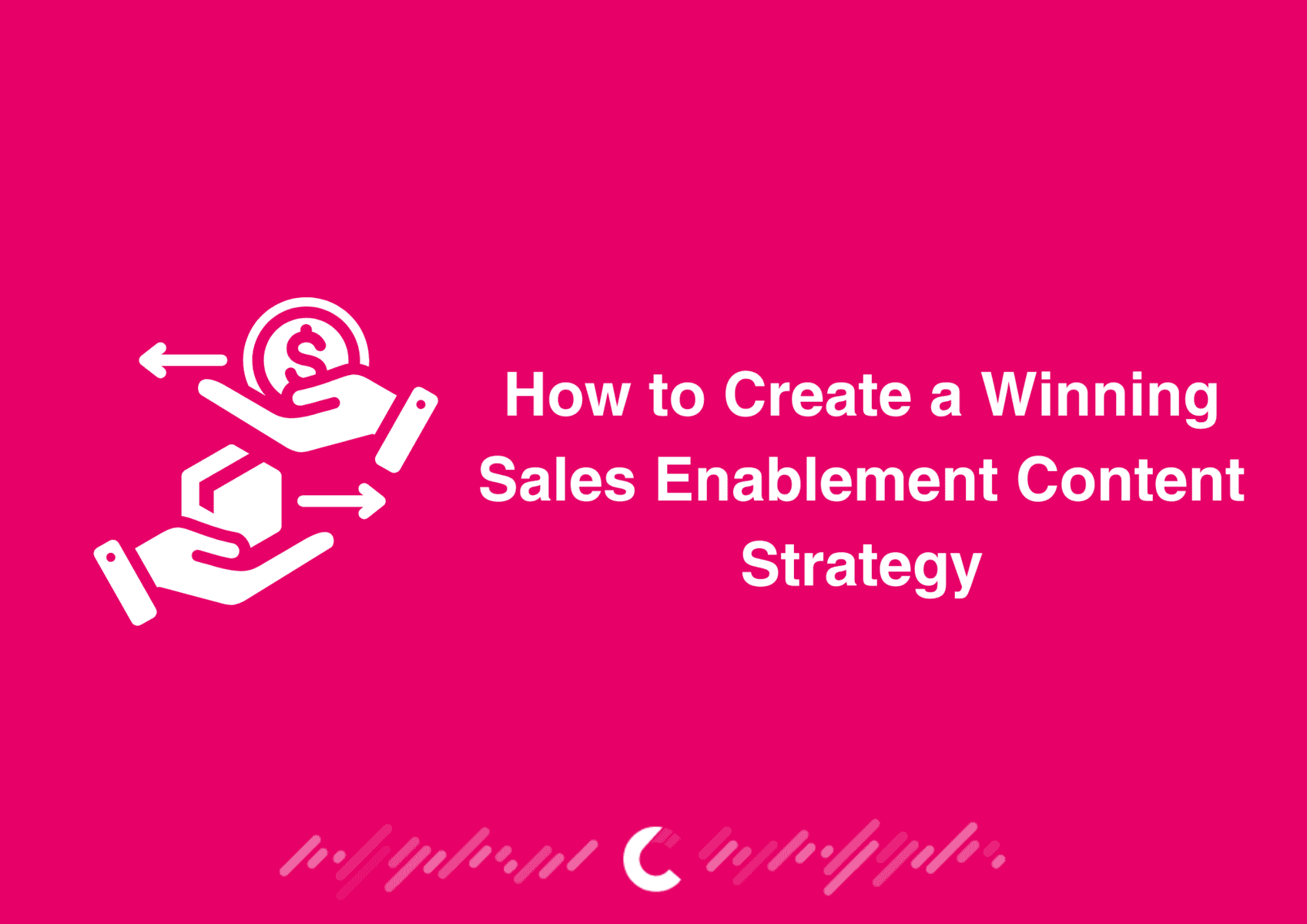
Auditing Existing Content
Conducting an audit of your existing content is the first step in crafting a winning sales enablement content strategy. This involves reviewing all materials currently available to your sales and marketing teams to identify what works, what needs updating, and what’s missing. By doing so, you can ensure that future efforts focus on creating content that aligns with your buyer’s journey and addresses actual needs.
For example, outdated sales playbooks or irrelevant case studies might need revisions, while new materials like competitor insights could fill noticeable gaps. A thorough audit lays the foundation for a more effective and targeted strategy.
Aligning Content with the Customer Journey
Mapping sales enablement content to each stage of the customer journey ensures prospects receive relevant information when they need it most. At the awareness stage, educational resources like blog posts or white papers introduce your solution.
As prospects move to consideration, tools such as case studies and product demos address specific challenges. During the decision stage, sales playbooks, ROI calculators, and testimonials help close the deal. Aligning content in this way not only improves the buyer experience but also boosts conversion rates by addressing questions and objections at every touchpoint.
Collaborating Across Teams
A successful sales enablement content strategy requires close collaboration between marketing, sales, and leadership teams. Marketing provides the materials, sales offers insights into what resonates with prospects, and leadership ensures alignment with business goals.
Regular communication between these teams helps identify gaps and refine content to better support sales efforts. Joint workshops or feedback sessions can be particularly effective in ensuring everyone is on the same page.
This cross-functional collaboration fosters a unified approach, making it easier to deliver consistent messaging throughout the sales process.
Measuring Performance
Measuring the effectiveness of your sales enablement content is crucial to understanding its impact and identifying areas for improvement. Key metrics to track include usage rates by sales teams, engagement levels from prospects, and conversion rates tied to specific pieces of content.
Tools like content management platforms or CRM systems can help collect and analyze this data. Regularly reviewing performance ensures that high-performing content is replicated while underperforming materials are revised or replaced.
By focusing on measurable outcomes, your team can continuously optimize the content strategy for better results.
Continuous Improvement
A winning sales enablement content strategy requires ongoing refinement. Regularly gather feedback from sales teams on which materials they find most useful and identify changing needs in the market.
Combine this input with performance data to make data-driven updates to your content library. Additionally, staying informed about industry trends and competitor strategies can help you adapt quickly and maintain a competitive edge. By treating your sales enablement content as a dynamic resource, you ensure it remains relevant and impactful over time.
B2B Sales Enablement Content: Specific Considerations
Targeting Decision-Makers
In B2B sales, decisions are often made by a group of stakeholders, including executives, department heads, and end-users. Sales enablement content must address the priorities of each decision-maker to ensure alignment and buy-in.
For instance, ROI-focused content like white papers or cost-benefit analyses can appeal to CFOs, while product demos may resonate more with technical teams. Tailoring content to highlight specific benefits for each role within the decision-making group increases the likelihood of a successful sale.
Focusing on ROI
In B2B sales, showcasing return on investment (ROI) is a critical factor in influencing decision-makers. Sales enablement content should clearly demonstrate how your product or service delivers measurable value, such as cost savings, revenue growth, or efficiency improvements.
Tools like ROI calculators, case studies with financial outcomes, and detailed comparison charts can help emphasize this point. By quantifying the impact of your solution, you not only build trust but also provide stakeholders with a compelling reason to move forward.
How Competitors App Enhances Sales Enablement Content
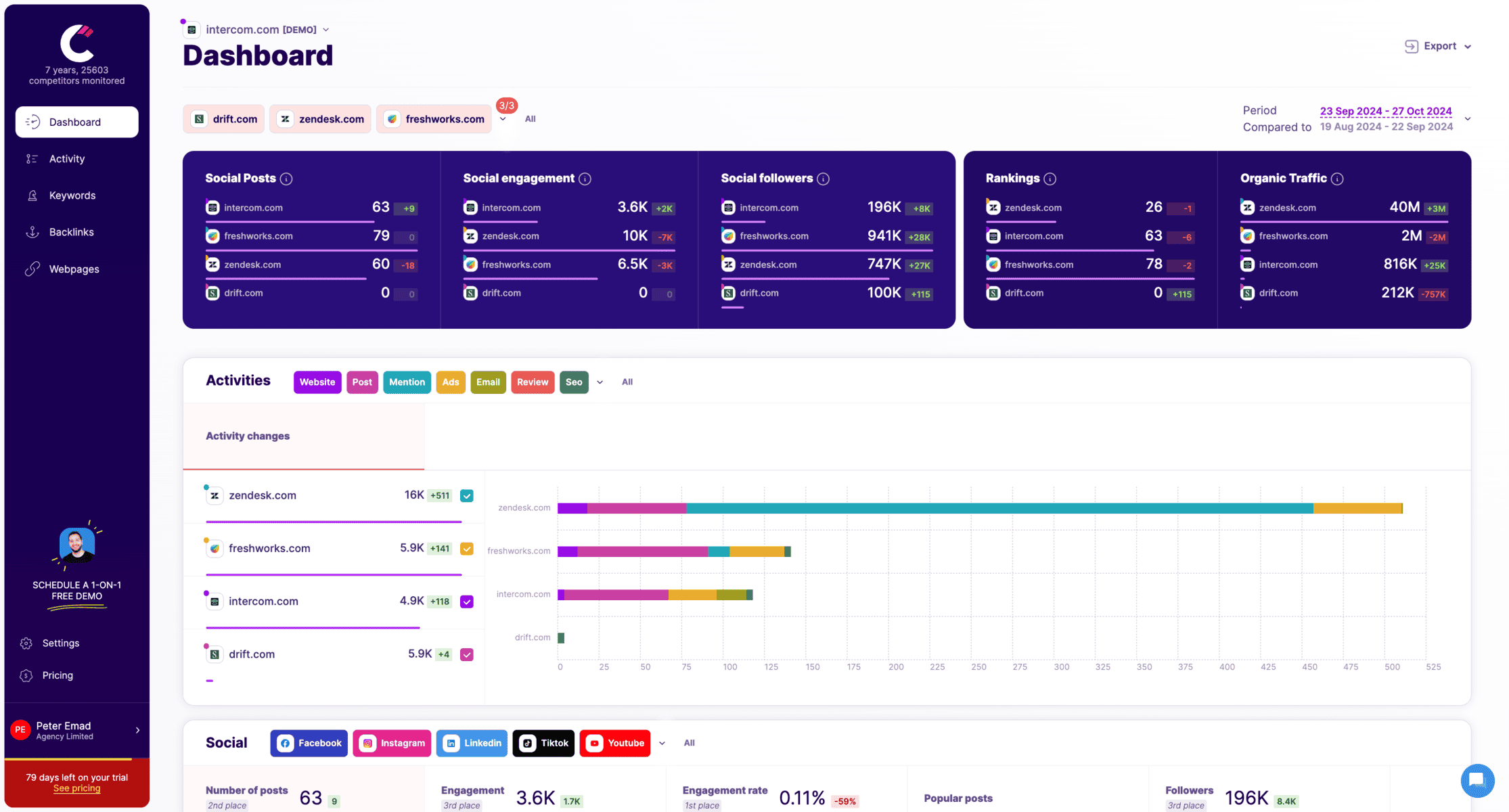
Competitive Insights
Competitors App provides valuable insights into your rivals’ strategies, helping you craft sales enablement content that highlights your unique strengths. By tracking competitors’ product launches, pricing changes, and marketing campaigns, your sales team gains a clear understanding of the competitive landscape. This information allows for the creation of targeted battlecards and tailored messaging that positions your offering as the superior choice.
Better Content Targeting
With Competitors App, you can analyze competitors’ ads, social media activity, and SEO performance to identify gaps and opportunities in your own content strategy. This ensures that your sales enablement materials address not only customer needs but also stand out against competitor offerings. Effective targeting increases the relevance and impact of your content, boosting engagement and conversions.
Real-Time Monitoring
One of the most powerful features of Competitors App is its ability to provide real-time updates on industry trends and competitor activities. This enables your team to adjust content strategies promptly, keeping your materials relevant and ahead of market shifts. Real-time monitoring ensures your sales enablement efforts remain proactive rather than reactive, giving your team a competitive advantage.
How to Generate Sales Battlecards Using Competitors App
Monitor Competitor Activities: Competitors App provides real-time updates on your competitors’ online activities, including website changes, social media posts, blog updates, and new product launches. By staying informed about these actions, you can identify areas where your offerings have a competitive advantage.
Analyze Marketing Strategies: The platform tracks competitors’ marketing campaigns, such as newsletters and promotional emails. Understanding their messaging and promotional tactics allows you to position your products more effectively and anticipate market moves.
Track SEO and Keyword Rankings: Competitors App monitors competitors’ keyword rankings and SEO efforts. By analyzing this data, you can identify opportunities to improve your own search visibility and highlight areas where you outperform competitors.
Gather Customer Feedback: The app aggregates reviews from over 60 sites, providing insights into competitors’ customer satisfaction and common complaints. This information helps you address potential objections and emphasize your strengths in areas where competitors may be lacking.
Compile the Battlecard: Using the collected data, create a concise document that includes:
- Competitor Overview: Key information about the competitor.
- Strengths and Weaknesses: Insights derived from customer reviews and product analyses.
- Product Comparisons: Feature-by-feature comparison highlighting your advantages.
- Objection Handling: Responses to common objections based on competitors’ shortcomings.
- Key Messaging: Tailored value propositions that resonate with your target audience.
Keep Battlecards Updated: Competitors App’s real-time monitoring ensures you receive the latest information, allowing you to update your battlecards promptly and keep your sales team equipped with current data.
Competitors App Pricing:
- Starts at $19/month, with a free trial available for users to test its capabilities.
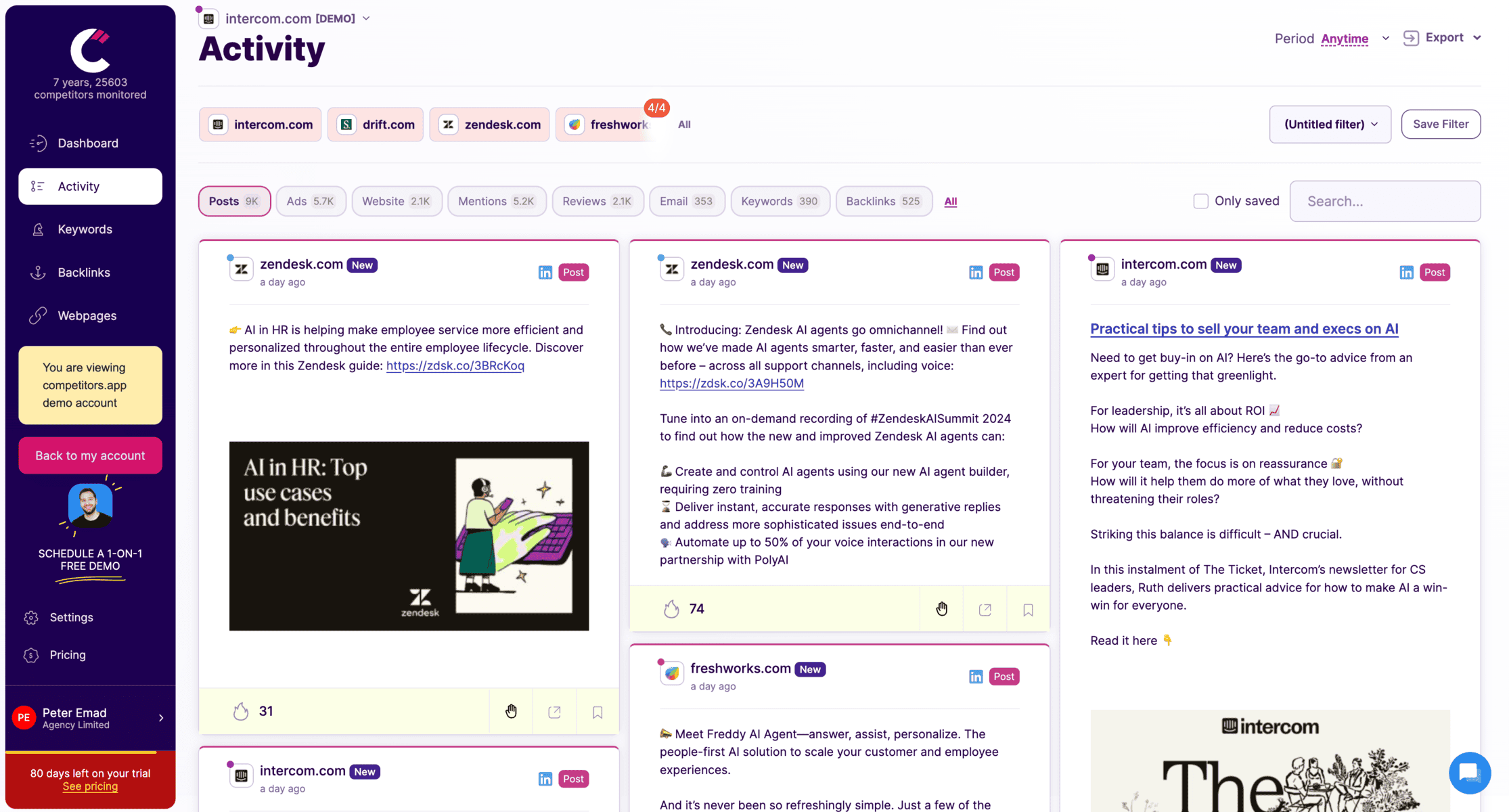
Tracks competitor social media updates across LinkedIn, Facebook, Twitter, and more.
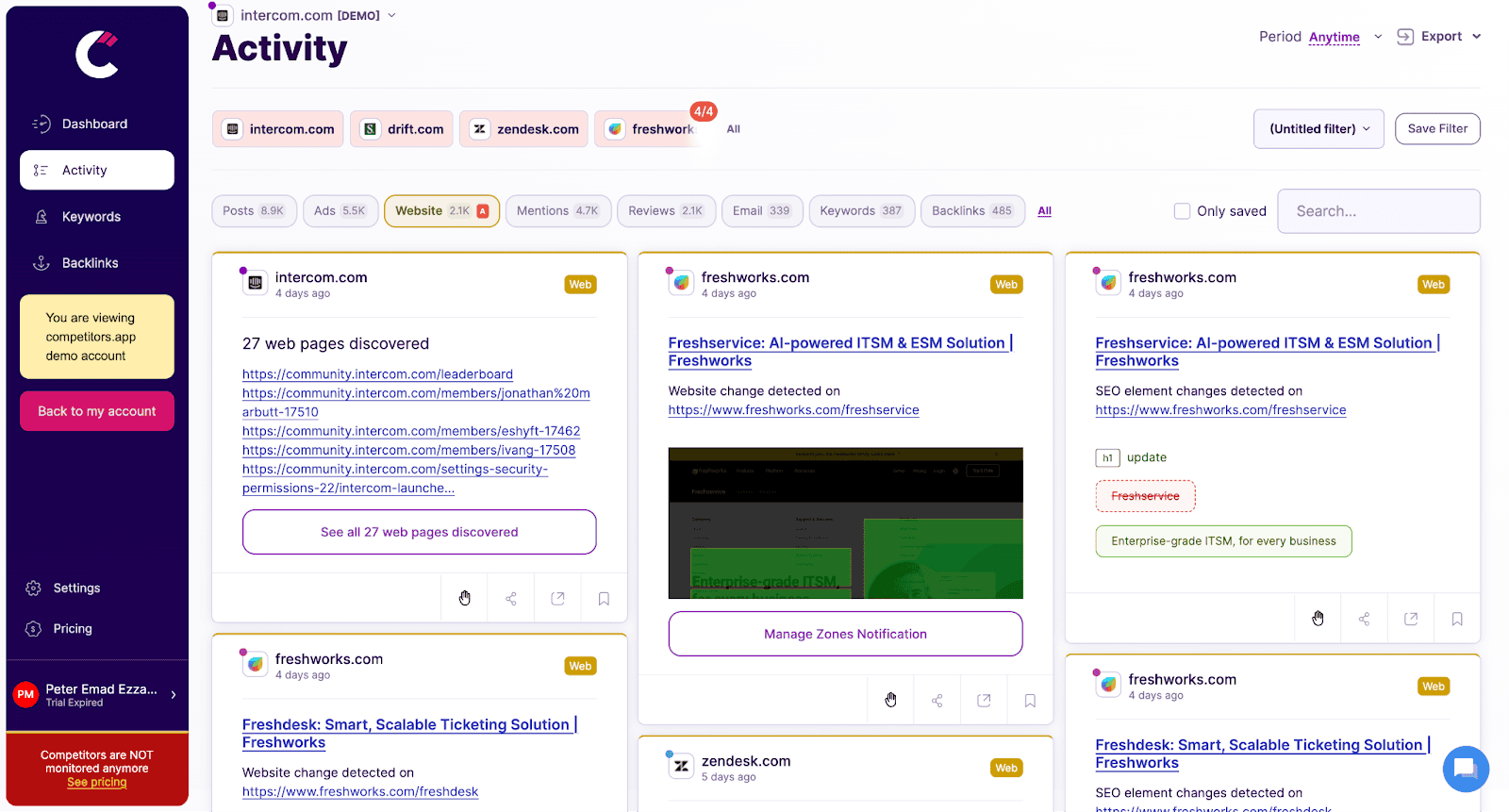
Monitors changes on competitors’ websites, such as product updates, pricing adjustments, and new messaging, providing instant alerts to help sales teams respond promptly.
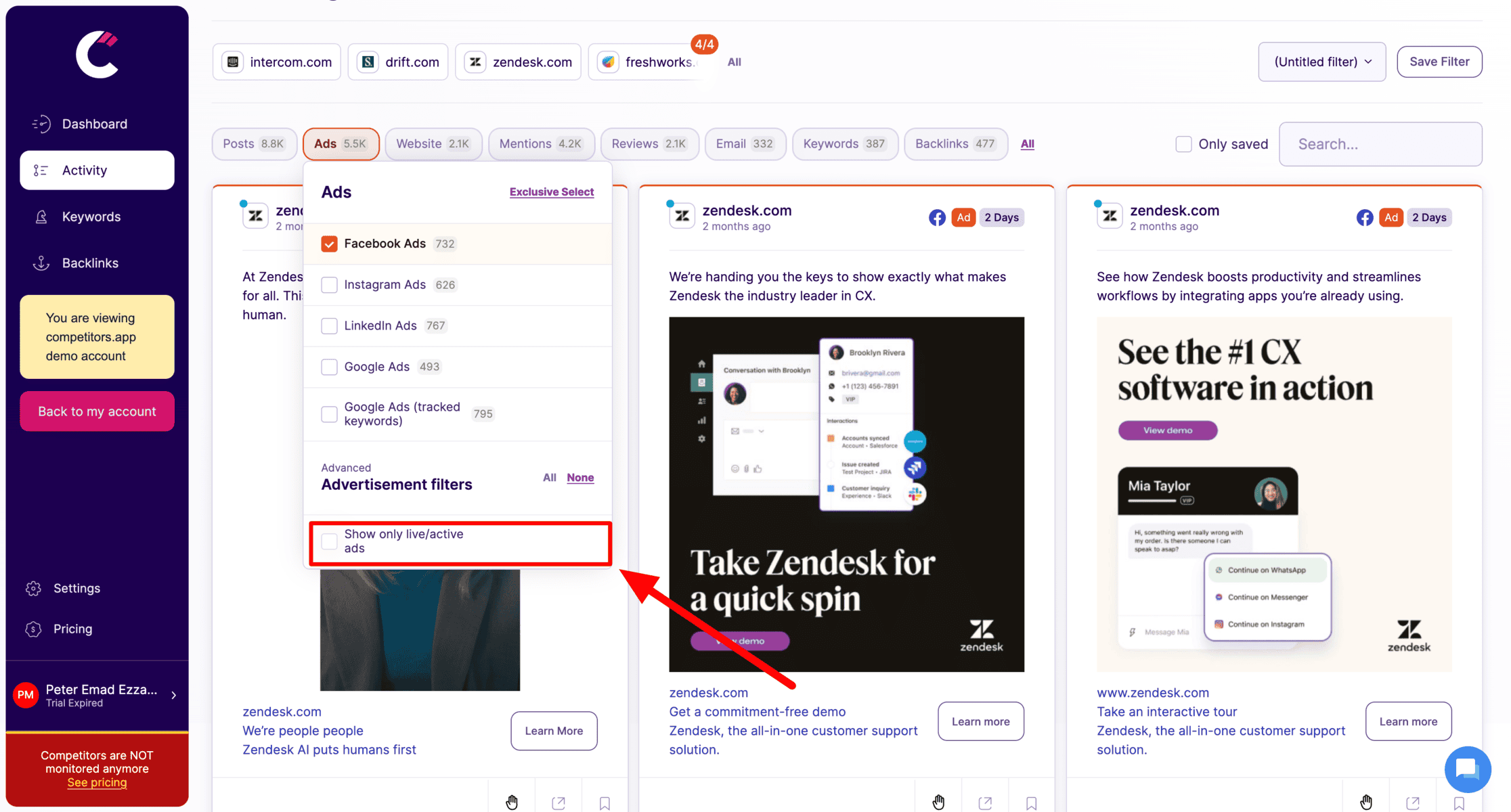
Tracks digital ad campaigns across platforms like Google Ads, Facebook, LinkedIn, and Instagram. It provides details on ad creatives, spending, and performance metrics, helping teams analyze successful ad strategies.

Analyzes competitors’ keyword strategies, organic rankings, and backlinks, allowing teams to refine their own SEO tactics and boost search visibility.

Tracks competitors’ email campaigns, including content, frequency, and engagement metrics, helping sales teams understand email tactics that drive engagement and conversions.
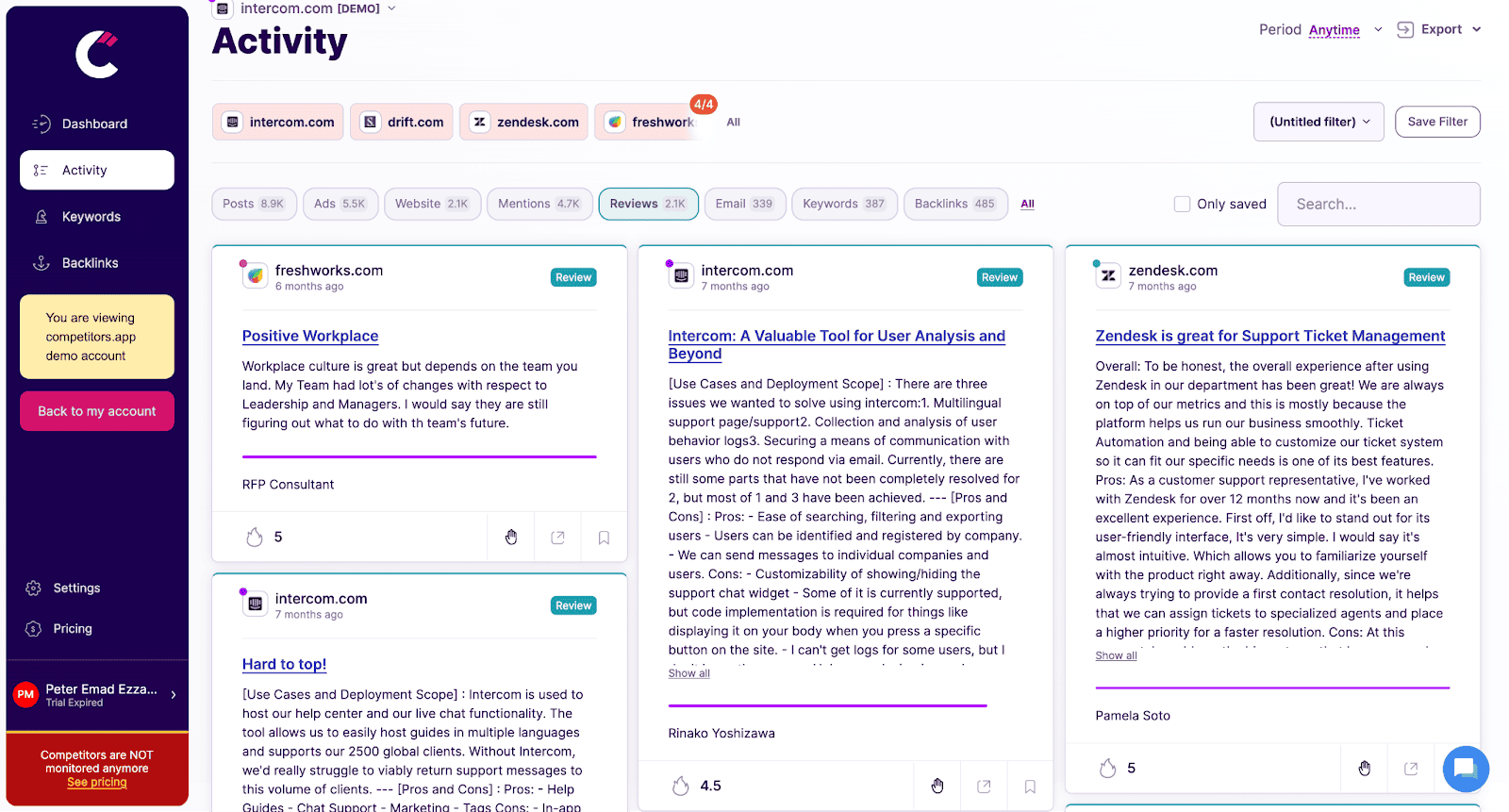
Analyzes customer reviews and ratings for competitors, providing insights into customer feedback, pain points, and product strengths, helping teams craft better sales pitches.
Best Practices for Managing Sales Enablement Content
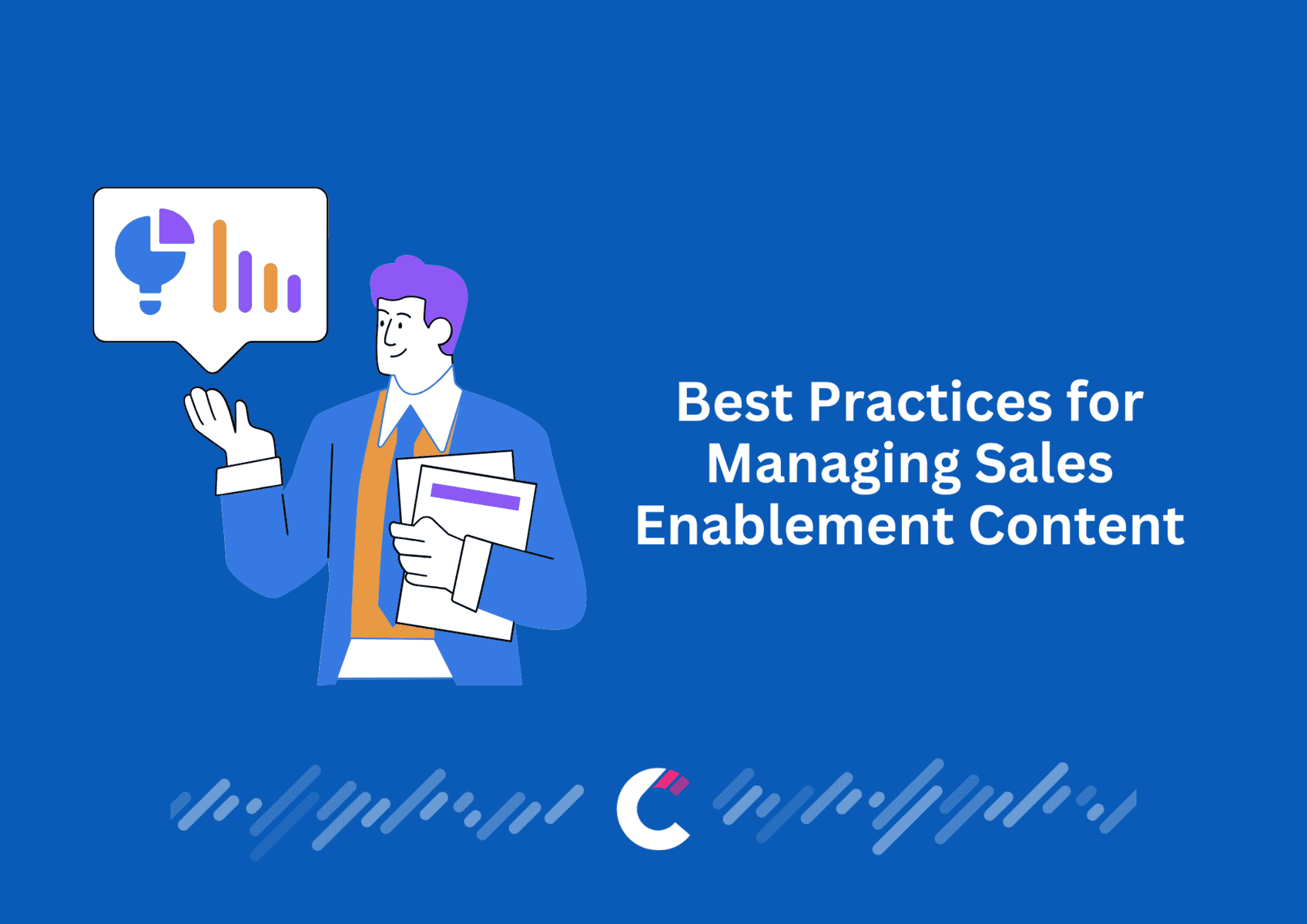
Centralizing Content Storage
A centralized system for storing sales enablement content ensures easy access for all team members. Using platforms like a content management system (CMS) or sales enablement software helps organize materials into categories such as buyer personas, case studies, and email templates.
Centralization eliminates the frustration of searching for scattered resources and ensures that everyone is using the latest and most relevant content.
Regular Updates
Sales enablement content must remain current to be effective. Regularly reviewing and updating materials ensures they align with evolving customer needs, market trends, and product changes.
Outdated case studies or scripts can undermine credibility, so establish a schedule for periodic content audits to maintain accuracy and relevance.
Training Sales Teams
Even the best content is ineffective if sales reps don’t know how to use it. Conduct training sessions to familiarize your team with available resources and demonstrate how to integrate them into their workflows.
Providing real-life scenarios during training can help reps understand when and how to leverage specific content, maximizing its impact on their sales efforts.
Frequently Asked Questions
1. What is sales enablement content?
Sales enablement content refers to materials created to help sales teams engage prospects effectively and close deals faster. These include internal resources like sales playbooks and training manuals, as well as external-facing content such as case studies, white papers, and product demos.
2. Why is sales enablement content important?
It bridges the gap between marketing and sales, ensures consistent messaging, and equips sales reps with the tools they need to address buyer concerns at every stage of the sales process. Companies using sales enablement strategies report increased productivity and higher win rates.
3. How do I create a sales enablement content strategy?
Start by auditing your existing content, mapping it to the customer journey, and collaborating with teams across your organization. Measure performance regularly and refine your materials based on feedback and data-driven insights.
4. What types of content should I prioritize?
Focus on creating a mix of resources like buyer personas, case studies, competitor insights, and interactive demos. These materials should address the needs of both your sales team and potential customers.
